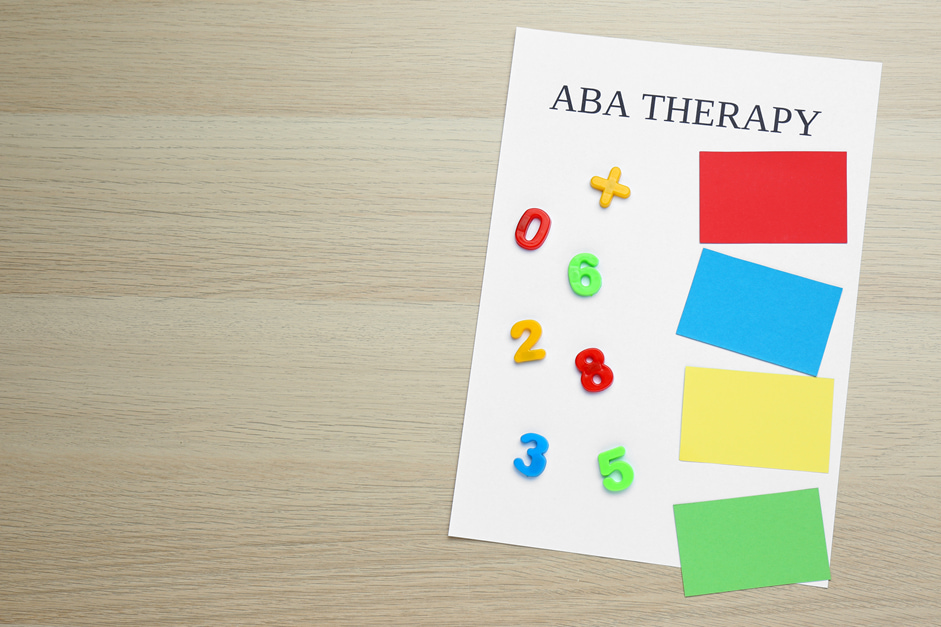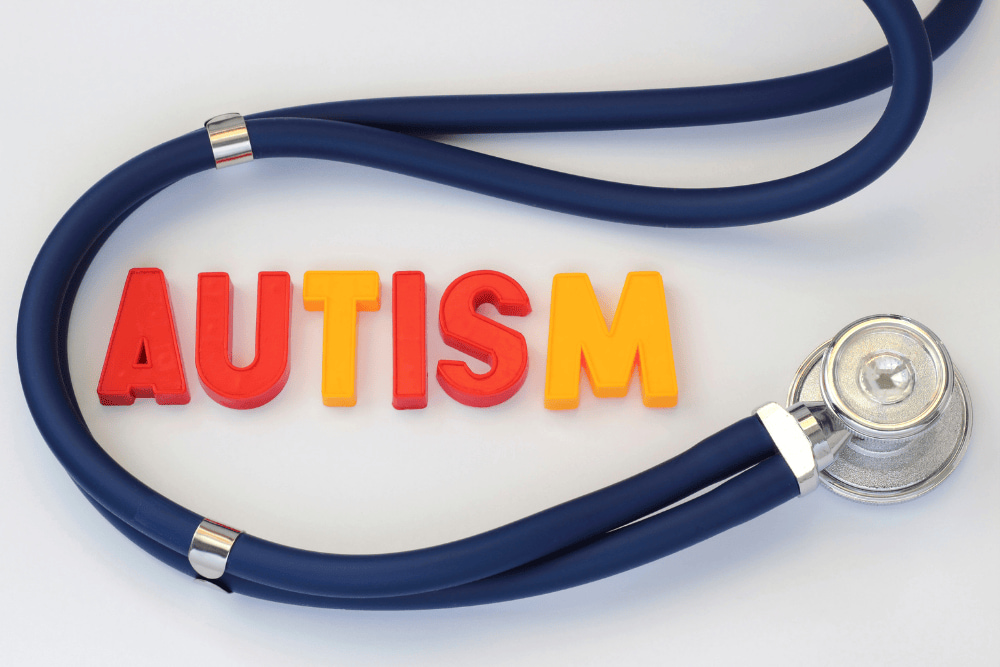Key Takeaways: Autistic Meltdowns
- A meltdown is an involuntary, intense response to overwhelming sensory, emotional, or social stress, not a tantrum or attention-seeking behavior.
- Sensory overload, routine changes, emotional stress, and social anxiety are common causes of meltdowns.
- Meltdown signs may include crying, screaming, pacing, withdrawal, repetitive behaviors, or difficulty communicating.
- During an Autistic meltdown, stay calm, reduce sensory input, offer space and support, avoid demands, and validate feelings.
Understanding Autistic Meltdowns
Autism is a complex neurodevelopmental disorder that affects a person's ability to communicate, form relationships, and interact with the world around them. People with autism may experience a wide range of challenges, one of which is called an "autism meltdown."
Recognizing the signs of an autism meltdown and responding with empathy and support is essential for meaningful intervention. At Above & Beyond Therapy, we're committed to equipping families, caregivers, and professionals with the tools to navigate the challenges of autism with confidence and compassion. Join us as we deepen understanding and promote effective strategies for supporting autistic individuals during meltdowns.
What is an Autistic Meltdown?
An autism meltdown is a complex and intense neurological response to overwhelming sensory or emotional experiences. During an autism meltdown, a person may become agitated, distressed, or overwhelmed, and may have difficulty communicating or regulating their emotions. It is important to recognize that an autism meltdown is not the same as a tantrum or a behavior problem. Rather, it is a physiological response to stress that can be incredibly challenging for the individual experiencing it.
What Causes Meltdowns in Autism?
Autism meltdowns can be triggered by various factors, such as:
Sensory overload
People with autism may have difficulty processing sensory information, which can lead to feelings of overwhelm or discomfort in certain environments. For example, loud noises, bright lights, or strong smells can be overwhelming for some individuals with autism.
Changes in routine
People with autism often rely on predictability and structure to feel safe and secure. Changes in routine or unexpected events can be challenging and cause anxiety.
Social anxiety
Social interactions can be stressful for people with autism. Difficulty understanding social cues or feeling like they don't fit in can lead to social anxiety and contribute to an autism meltdown.
Emotional stress
Emotional stressors such as frustration, anger, or disappointment can also trigger an autism meltdown. People with autism may have difficulty regulating their emotions and may struggle to communicate their feelings effectively.

What Does an Autistic Meltdown Look Like?
An autism meltdown can look different for each person, but common autistic meltdown symptoms include:
- Crying or screaming
- Flapping or pacing
- Aggressive or self-injurious behavior
- Withdrawing or shutting down
- Difficulty communicating or expressing emotions
- Hyperventilating or breathing rapidly
- Clenching fists or grinding teeth
- Rocking back and forth or hitting oneself
- Running away or hiding
- Engaging in repetitive behaviors, such as spinning or tapping
Signs That Someone is About to Have an Autism Meltdown
An autism meltdown can be triggered by various factors, and it's important to recognize the signs that someone may be on the verge of a meltdown. Common signs to look out for include:
- Increased anxiety, such as fidgeting or pacing
- Heightened sensitivity to sensory input, such as covering their ears or squinting
- Difficulty communicating or expressing themselves clearly
- Becoming easily frustrated or agitated
- Withdrawing from social interactions or activities they normally enjoy
- Engaging in repetitive behaviors more frequently than usual
It's important to note that not everyone with autism will display these signs before having a meltdown. However, being aware of these potential warning signs can help you better support and understand individuals with autism.
How Can You Help Someone During an Autism Meltdown?
If you are with someone who is having an autism meltdown, there are several things you can do to help:
- Remain calm and patient
- Give the person space and time to calm down
- Offer sensory support, such as a quiet space or calming music
- Validate the person's feelings and experiences
- Avoid making demands or giving instructions
It is important to remember that each person with autism is unique, and what works for one person may not work for another. The best way to support someone during an autism meltdown is to listen to their needs and respect their individual experiences.
Strategies for Preventing or Reducing Autism Meltdowns
While autism meltdowns can be challenging for both the individual experiencing them and their loved ones, there are strategies that can be implemented to prevent or reduce their frequency. Here are some tips:
Establish Routines and Predictability
People with autism often rely on routines and predictability to feel safe and secure. By establishing consistent routines and schedules, individuals with autism may feel more comfortable in their environment, which can help prevent meltdowns.
Identify Triggers
One of the best ways to prevent an autism meltdown is to identify triggers that may lead to one. This may include sensory overload, changes in routine, or emotional stressors. Once triggers have been identified, it's important to work on ways to avoid or minimize exposure.
Provide Sensory Support

Sensorry support can go a long way in preventing an autism meltdown. This may include providing noise-cancelling headphones, sunglasses, or weighted blankets. It's important to work with the individual with autism to determine what sensory supports work best for them.
Teach Coping Strategies
Teaching coping strategies can be incredibly helpful in preventing meltdowns. This may include deep breathing exercises, mindfulness techniques, or social stories that help individuals with autism understand how to manage overwhelming situations.
Communicate Clearly
Clear communication is key when working with individuals with autism. It's important to use simple language and avoid figurative language or sarcasm that may be confusing. Additionally, visual supports such as picture schedules or written instructions can help individuals better understand expectations.
By implementing these strategies, individuals with autism and their loved ones can work together to prevent or reduce the frequency of meltdowns.
Meltdowns vs. Tantrums in Autistic Individuals
Meltdowns and tantrums may look similar on the surface, but they are two very different things. While meltdowns are a response to stress or sensory overload, tantrums are typically a deliberate behavior used to get attention or obtain something they want.
During a tantrum, a child may scream, cry, or throw themselves on the ground in an attempt to manipulate their caregiver into giving them what they want. In contrast, during an autism meltdown, the individual is not in control of their behavior and is simply reacting to overwhelming stimuli.
It's important for caregivers and loved ones to be able to distinguish between meltdowns and tantrums so that they can respond appropriately. Responding with punishment or discipline during an autism meltdown can be harmful and exacerbate the situation. Instead, caregivers should focus on providing support and understanding until the individual has calmed down.
In summary, while meltdowns and tantrums may appear similar at first glance, it's important to recognize the difference between them in order to provide appropriate care and support for individuals with autism.
Misconceptions About Autism and Meltdowns
There are many misconceptions about autism meltdowns that can be harmful to individuals with autism. Here are some common myths and why they are problematic:
- Autistic meltdowns are attention-seeking behavior - Autism meltdowns are not intentional behavior but involuntary responses to stress or sensory overload.
- Meltdowns only happen in children - Autistic meltdowns can occur at any age and may even become more frequent during times of increased stress or anxiety.
- Autistic Meltdowns are the same as tantrums - While tantrums are deliberate attempts to get something (e.g., attention, a toy), meltdowns are uncontrollable responses to overwhelming stimuli.
Real-Life Examples of Successfully Managing Autism Meltdowns
While autism meltdowns can be challenging, there are many strategies that have been successful in managing them. Here are some real-life examples of strategies that have worked for individuals with autism:
Sensory Support
Providing sensory support can be incredibly helpful in preventing or reducing the frequency of meltdowns.One individual with autism shared that they always carry earplugs with them to help manage sensory overload in noisy environments. This simple strategy has allowed them to participate in social events without feeling overwhelmed or anxious.
Communication and Social Stories
Clear communication can go a long way in helping individuals with autism understand expectations and manage overwhelming situations. Social stories, which use pictures and simple language to explain social situations, can be particularly helpful.
One parent shared that their child was able to better manage meltdowns after they created a social story about going to the grocery store. The story included pictures of common triggers (e.g., bright lights, loud noises) and coping strategies (e.g., deep breathing). By reviewing the story before going to the store, the child felt more prepared and less anxious.
Routine and Predictability
Establishing consistent routines and schedules can help individuals with autism feel more comfortable in their environment. One individual shared that they always follow the same morning routine, which includes specific steps such as brushing their teeth and making breakfast in a certain order.
By following this routine every day, they feel less anxious and better able to manage potential stressors throughout the day.
Mindfulness Techniques
Mindfulness techniques such as deep breathing exercises or meditation can be helpful for managing anxiety and preventing meltdowns. One individual with autism shared that they use a mindfulness app on their phone when feeling overwhelmed or stressed.
By taking a few minutes to focus on their breath and calm their mind, they are better able to manage the situation and prevent a meltdown.
These are just a few examples of strategies that have been successful in managing autism meltdowns. By working together and trying out different strategies, individuals with autism and their loved ones can find effective ways to prevent or reduce the frequency of meltdowns.
Managing Autistic Meltdowns with Understanding
Autism meltdowns are a challenging aspect of autism that can be difficult for both the person with autism and those around them. By understanding what causes autism meltdowns and how to support someone during one, we can create a more inclusive and understanding society for people with autism.
At Above and Beyond Therapy, we’re committed to creating a supportive and understanding environment for every child. If your child experiences autistic meltdowns, reach out to learn how our team can help guide them toward greater comfort and progress.
FAQ: Autistic Meltdown
Are meltdowns the same as shutdowns in autism?
No, a meltdown is an outward reaction to overwhelm, while a shutdown is an inward withdrawal where the person may go quiet, freeze, or become unresponsive. Both are stress responses.
What can I do after an autism meltdown to support recovery?
Offer reassurance, validate their feelings, avoid shaming language, and give them time to recover. Later, reflect calmly on what happened to identify triggers and plan future support strategies.
Is there a difference between the signs of autistic meltdown in adults and kids?
Yes, the signs of autistic meltdowns can differ between adults and children. While both may experience overwhelming emotions and loss of control, children often display more visible behaviors like crying, yelling, or hitting, whereas adults may show more internalized signs, such as withdrawal, shutdowns, or increased anxiety. Adults may also mask their distress due to social expectations.
How does Above & Beyond Therapy help with autistic meltdowns?
We provide individualized behavior support plans, parent training, and skill-building strategies to help individuals and families recognize, prevent, and respond to meltdowns with compassion and confidence.


.jpg)





.png)



